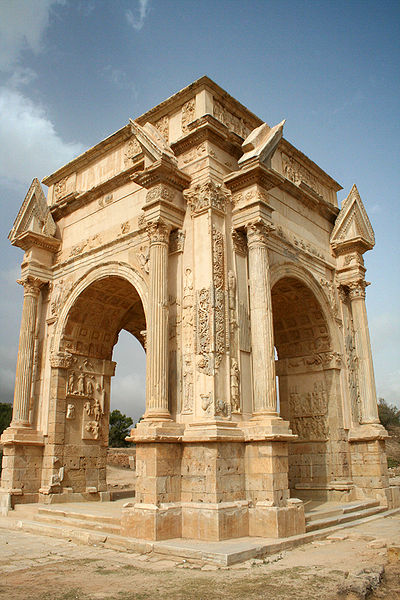All throughout Europe, there are many beautiful ancient Roman ruins, but there are equally-magnificent and lesser-known ruins on other continents too. A good example of this is Leptis Magna. Leptis Magna is the remnants of a once-great Roman port city, and is considered to be one of the most impressive and unspoiled Roman ruins in the world.
The city ruins are near the coast in the African country of Libya, around 80 miles from its capital, Tripoli.
Here’s some pictures of the city:
The city was founded by the Phoenicians around 3000 years ago, and was originally called Lpqy. During the reign of the Roman Emperor Tiberius, it became a thriving trade city. Then, from the year 193 onwards, it became one of Roman Africa’s most prominent cities. This was because the Roman Emperor at that time, Septimius Severus, was actually born in Leptis Magna, so he naturally favoured his home-city over others. Severus enlarged the city, and as a result Leptis Magna contains many Roman-inspired buildings; forums, a theatre, public baths, marketplaces and monuments, to name a few.

The theatre at Leptis Magna. Credit:(http://commons.wikimedia.org/wiki/User:Man)

Another view of the theatre. Credit:(http://commons.wikimedia.org/wiki/User:Man)

Public baths in Leptis Magna. Credit:(http://commons.wikimedia.org/wiki/User:Man)
Eventually, the city was ransacked by the Vandals, and later by the Berbers. Byzantine Empire general Flavius Belisarius tried to re-establish it as a provincial Byzantine capital, but the city didn’t recover from the destruction that previous raiders had caused. By the year 650 AD, the city was mostly abandoned.
Libya isn’t the easiest country to visit due to its political instability, but Leptis Magna would certainly be a wonderful place to see. Archaeologists have still not finished excavating the ruins, so it will also be interesting to see what else ends up being discovered in the future.







You must be logged in to post a comment.